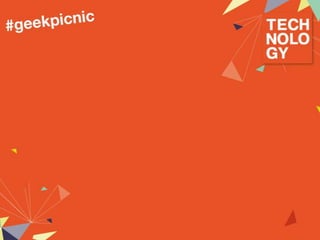IoT: Windows на платах, облачные холодильники и то, как мы это делаем
- 2. IoT: Windows на платах, облачные холодильники и то, как мы это делаем Alex Belotserkovskiy {Microsoft Russia | DX | Tech Evangelist Cloud, IoT & HPC}
- 3. Мир сегодня
- 4. 2003 2010 2015 2020 50 млрд Рост количества устройств
- 5. • Дешевые сенсоры ($1.30=>60c) • Дешевые коммуникации (40x) • Дешевая обработка (60х) • Появление смартфонов • Широкое покрытие • IPv6 Причины этого:
- 6. • Финансовая прибыль – AT&T • Повышение отдачи от существующих ресурсов -Verizon • Новые сценарии - Fujitsu Зачем это нужно?
- 7. Как вы думаете, как связаны: • Коровы • Тостеры • Заводы по производству бутылок • Квадрокоптеры • Умные дома • Дроны
- 8. На первый взгляд – ничем. Но, если начать разбираться…
- 9. То все из этого списка – вещи, либо то, что может их носить. То, что формирует новую концепцию Интернета Вещей.
- 10. Как мы видим Интернет Вещей Интернет вещей начинается с Ваших вещей. • Использовать то, что есть • Добавить дополнительные устройства к существующим • Получать больше от тех данных, которые уже собираются
- 11. Давайте посмотрим на примерах, как мы (и не только мы, на самом деле) делаем Интернет Вещей для коров, тостеров и заводов.
- 13. Как мы это сделали? Windows 10
- 14. Как мы это сделали? Общее ядро Общая модель Windows 10 Инструменты IoT HoloLens Surface Hub Windows Windows Phone
- 17. История третья, и заключительная: коровы и заводы
- 18. ДОМ
- 20. Мы делаем Интернет Вещей с помощью: Windows 10 – для маленьких устройств Облака Azure – для обработки больших данных Других инструментов (HoloLens, Band)
- 21. Если у вас будут вопросы про Windows 10, про Интернет Вещей и др. – пишите, мы отвечаем: iotrus@microsoft.com
- 22. Контакты Александр Белоцерковский {Microsoft Russia | Tech Expert Cloud, HPC & IoT} albe@microsoft.com; @ahriman_ru; ahriman.ru Группа IoT – http://facebook.com/groups/mastersofiot Группа Azure для всех – http://facebook.com/groups/azurerus/
Editor's Notes
- Key goal of slide:: Land Microsoft’s unique and differentiated point-of-view on the Internet of Things: the Internet of Your Things. Microsoft believes the Internet of Things doesn’t have to be overwhelming. Businesses can start small, with a few changes that make a big impact. It’s not about the billions of things that can be connected, it’s about YOUR THINGS. And, it’s already happening! Slide talk track: The Internet of Your Things is not about ripping and replacing technologies in your enterprise. It’s about leveraging what you have, adding on to your existing systems, using your existing things in new ways, and innovating and optimizing so everything works better together. If you’re a retailer, think about how smarter POS terminals can increase cross-selling and up-selling. If you’re in healthcare, think about how connecting patient monitors, tablets, signage and other equipment can streamline patient care. For manufacturers, sensors on the factory floor can “talk” to diagnostic monitors to improve production efficiency and reduce down time. The Internet of Things starts with your things. It is about the things that matter most to your business. Build on the infrastructure you already have. Connect the devices you already own…then add to your existing investments. Tap into the data that already exists. The Internet of Your Things is about getting away from spending all your time just running your business, and thinking about finding ways to make it thrive. Start realizing the potential of the Internet of Your Things.
- This is that system. The Fujitsu GyuHo ("Cow Step") SaaS service on Microsoft Azure. Step count data from the pedometers on each cow are sent over WiFi and the internet to a service on Azure, which analyzes the data and produces alerts for the farmer on his mobile phone.
- It turns out there is a simple secret to detecting when a cow is in heat. Let me show you this with a graph. The X-axis is time of night. Y-axis is the number of steps taken. The lower line is the number of steps on a normal night by our sample cow. The upper line is the number of steps when the cow goes into estrus. The number of steps per hour just shot way up! It turns out that this signal is about 95% accurate for detection of heat, especially in a controlled environment such as the dairy farm. The optimal time for Artificial Insemination is 16 hours from here, for maximum conception rate. That is when AI meets AI – Artificial Insemination, that is. And Fujitsu researchers discovered another amazing thing. There is a window of fertility around the optimum time for insemination. If you inseminate in the first half of that window, you are likely to get a female, and if you inseminate in the second half, you are likely to get a male calf. With 70% probability. The farmer now has an amazing control at his disposal – depending on what mix of cows and bulls the farmer needs to maintain, he can choose his breeding strategy. On an average, farmers can increase calf production about 12% with this strategy – in some cases as much as 31%. This translates into significant increases in their revenue. And this is not counting savings from not having expensive farm labor to monitor estrus. Fujitsu also found that they could detect over 8 different diseases from the associated unique step count patterns. And remember – that 5% false positive rate in detection – that turns out to be important too – a big fraction of that is when the cow jumps over the fence and skips the farm. Important to detect. <LONG PAUSE> A service like this would not have been possible without the internet of things and the cloud. It’s literally a few days of work for you to build such a service in the cloud and go global with Azure’s worldwide datacenters.

